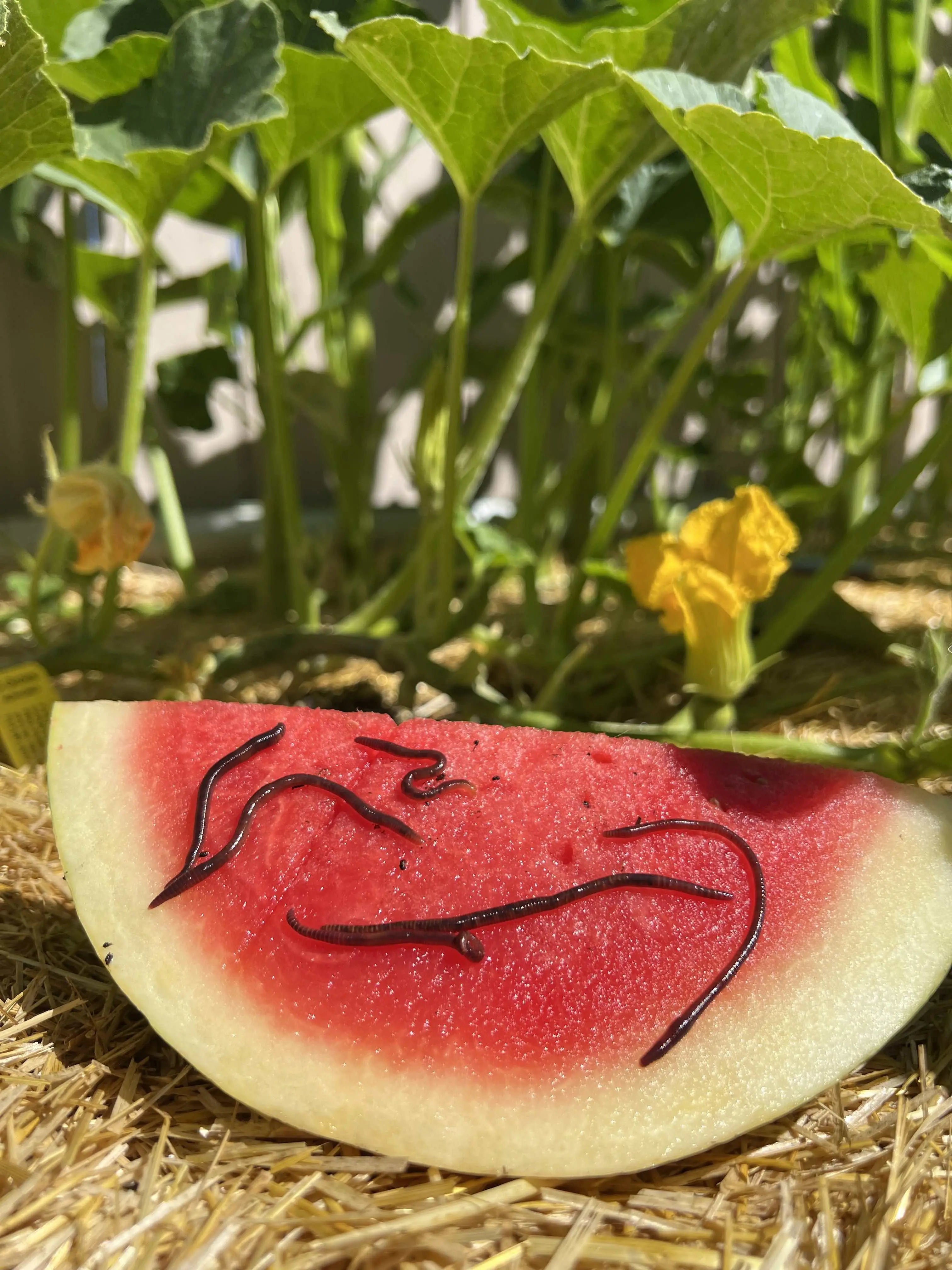Mastering Red Wiggler Composting: Essential Practices for Healthy Composting
Mastering Red Wiggler Composting: Essential Practices for Healthy Composting
Blog Article
Comprehending the Benefits of Red Wiggler Composting: How This Reliable Technique Changes Organic Waste Into Nutrient-Rich Soil Amendments
Red Wiggler composting, employing the varieties Eisenia fetida, presents an engaging method to natural waste administration, transforming kitchen area scraps and yard particles into valuable dirt amendments. This technique not only boosts soil fertility however also addresses pushing ecological issues, consisting of land fill waste decrease and greenhouse gas discharges. As we explore the details of this process, the diverse benefits it provides might reveal unforeseen understandings into sustainable methods and ecological balance. Comprehending these measurements may trigger a reevaluation of how we regard waste and its potential contributions to a healthier world.
What Are Red Wigglers?
Red wigglers, scientifically known as Eisenia fetida, are a types of earthworm that play an essential function in vermicomposting systems. These worms are identified by their reddish-brown shade, fractional bodies, and a distinctive capacity to thrive in organic-rich environments, making them excellent for composting applications - Red Wiggler Composting. Unlike their garden-dwelling counterparts, red wigglers prefer to occupy the upper layers of soil, where decomposing issue is abundant
Generally measuring in between 3 to 4 inches in size, red wigglers have a high reproductive rate, enabling them to increase quickly under ideal conditions. They have an one-of-a-kind gastrointestinal system that enables them to refine organic waste efficiently, converting it right into nutrient-rich castings, which are highly valuable for plant development.
Their resistance to differing wetness levels and temperature level ranges further boosts their utility in vermicomposting configurations, making them a preferred option among composting fanatics. Furthermore, red wigglers are aerobic microorganisms, which requires a well-aerated composting setting, making sure efficient decay. Comprehending the biological attributes and habits of red wigglers is important for maximizing their use in sustainable waste management methods.

Advantages of Vermicomposting
Utilizing the power of vermicomposting deals a wide variety of farming and environmental benefits. It substantially reduces natural waste in garbage dumps, thereby decreasing methane emissions, a powerful greenhouse gas. By drawing away food scraps and yard waste to vermicomposting, we sustain an even more lasting waste management system.
Furthermore, vermicomposting improves dirt health. The spreadings created by red wigglers are abundant in essential nutrients, germs, and enzymes, enhancing soil structure and fertility. This nutrient-rich change advertises durable plant development and raises water retention, lowering the need for chemical fertilizers.
Additionally, vermicomposting fosters biodiversity in the dirt ecological community. The intro of beneficial microorganisms from worm castings help in condition reductions and nutrient cycling, producing a healthier atmosphere for plants.
Economically, vermicomposting reduces the costs connected with chemical inputs and waste disposal. Farmers and gardeners can cultivate top quality produce at lower expenses, contributing to food safety and security and sustainability.
Exactly How to Start Composting
Beginning a composting venture can be a satisfying and straightforward process. To start, select a suitable place that is well-drained and gets partial sunlight. This will certainly help keep a well balanced temperature level, essential for the composting process. Next, pick a garden compost bin or create a marked location in your garden, ensuring it is conveniently obtainable for including materials and collecting garden compost. more information
Collect natural materials such as cooking area scraps, lawn waste, and shredded paper. Go for a well balanced mix of 'eco-friendly' products, high in nitrogen (e.g., fruit scraps, coffee grounds), and 'brownish' materials, rich in carbon (e.g., dried out fallen leaves, cardboard) A ratio of about 2:1 environment-friendly to brownish materials is perfect.
Beginning layering your materials, making certain adequate air blood circulation by transforming the heap consistently. This advertises cardiovascular disintegration, speeding up and minimizing odors up the process. Display moisture levels; the garden compost should really feel like a wet sponge however not extremely wet.
Nutrient Account of Vermicompost
Composting, particularly with red wigglers, yields a nutrient-rich item known as vermicompost. In addition, it gives trace elements like iron, calcium, and magnesium, cultivating durable plant growth and boosting dirt health and wellness.
The microbial task present in vermicompost even more enhances its account, presenting advantageous bacteria and fungi that advertise vitamins and mineral schedule and uptake in plants. This organic part help in reducing plant diseases and boosting dirt framework, resulting in boosted water retention and aeration.

Ecological Effect of Composting
The ecological effect of composting, specifically via using red wigglers, is multifaceted and extensive. This approach substantially reduces the quantity of organic waste sent to landfills, which consequently lessens greenhouse gas emissions, specifically methane-- a potent contributor to environment click over here change. By diverting natural materials from garbage dumps, red wiggler composting not just helps alleviate ecological deterioration yet also promotes lasting waste monitoring practices.

Moreover, composting adds to carbon sequestration, as the process captures carbon dioxide from the ambience and shops it in the dirt. This all-natural procedure help in combating environment modification while enhancing the dirt - Red Wiggler Composting. Generally, red wiggler composting presents a practical, environmentally friendly service for waste administration and environmental sustainability, promoting healthier ecosystems and a more lasting future
Conclusion
In verdict, Red Wiggler composting serves as an effective technique for converting natural waste into valuable dirt amendments. The procedure not only boosts soil fertility and framework however also mitigates ecological problems associated with waste disposal.
Red Wiggler composting, employing the types Eisenia fetida, presents an engaging approach to natural waste management, transforming kitchen scraps and backyard debris right into useful dirt amendments. Unlike their garden-dwelling equivalents, red wigglers choose to occupy the upper layers of soil, where rotting matter is bountiful.
The spreadings produced by red wigglers are abundant in important nutrients, germs, and enzymes, enhancing soil framework and fertility. The nutrient-rich by-products of red wiggler task enhance soil framework, increase water retention, and promote biodiversity within the dirt ecosystem.In final thought, Red Wiggler composting offers as an efficient approach for converting linked here organic waste right into useful dirt modifications.
Report this page